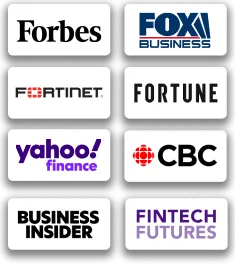- Blog
- Flexible Oled Market
Top 10 Trends Transforming the Flexible OLED Market
Published On : 22 Oct 2025
The flexible OLED (Organic Light-Emitting Diode) market is entering a pivotal growth phase as technology advancements, supply chain maturity, and evolving consumer preferences redefine display innovation. Flexible OLEDs, known for their thinness, lightweight form, and bendable design, are moving beyond premium smartphones into wearables, automotive systems, and large-format displays. According to industry estimates, global demand for flexible OLED panels is expected to rise sharply over the next decade, supported by continuous investment in materials, manufacturing, and application design.

1. Foldable Devices Achieve Mass-Market Readiness
Foldable smartphones represent the largest commercial driver of flexible OLED demand. The technology has shifted from experimental to mainstream, driven by improvements in hinge mechanisms, screen protection layers, and form-factor optimization. Brands such as Samsung, Huawei, and Motorola have helped normalize foldable displays, and adoption is expanding as prices decline and panel durability improves. Foldable devices now account for a growing share of global smartphone revenue, reflecting both consumer interest and OEM confidence in flexible OLED reliability.
2. The Apple Catalyst in Flexible OLED Adoption
The possibility of Apple introducing a foldable iPhone has intensified investment across the OLED ecosystem. Even limited-scale pilot programs influence suppliers, spurring pre-emptive capacity expansion and design alignment across the value chain. Apple’s involvement typically sets quality and performance benchmarks for the industry, prompting competitors to accelerate their own R&D and ensuring long-term growth prospects for flexible OLED technology.
3. Durability Enhancements Redefine Product Life Cycles
Mechanical resilience has been a primary obstacle to widespread adoption of flexible OLEDs. Recent advances in ultra-thin glass substrates, enhanced encapsulation layers, and improved stress distribution have increased folding life cycles to several hundred thousand folds. These improvements enable manufacturers to offer longer warranties and establish flexible OLEDs as a durable alternative to rigid panels. Continuous reliability testing and materials engineering remain at the core of next-generation product development.
4. Automotive Displays Drive High-Value Growth
Automotive manufacturers are rapidly adopting flexible OLEDs for curved dashboards, infotainment systems, and ambient lighting panels. The ability to mold displays into non-linear surfaces aligns with design goals for modern electric and luxury vehicles. OLED’s superior contrast and energy efficiency also enhance user interfaces in digital cockpits. Analysts expect automotive OLED applications to grow at one of the fastest rates among all sectors, offering higher profit margins and long-term contracts for suppliers.
5. Rise of Rollable and Slideable Displays
Flexible OLED innovation is not limited to folding screens. Rollable and slideable displays are emerging as alternative form factors that expand usable screen area without compromising device size. Companies such as LG and BOE have demonstrated rollable TVs and prototypes of expandable smartphones, signaling a new phase in display engineering. These developments highlight the adaptability of flexible OLEDs and their potential to redefine how consumers interact with electronic devices.
6. Expansion and Consolidation in Manufacturing Capacity
Production of flexible OLED panels remains concentrated among a few leading manufacturers, including Samsung Display, LG Display, and BOE Technology. However, global investment in new production lines continues, especially in China and South Korea. Supply chain consolidation has also strengthened collaboration between panel producers and materials suppliers specializing in polyimide substrates, adhesives, and barrier films. The strategic alignment between manufacturers and technology providers is expected to improve yield rates and cost efficiency over the next few years.
7. Cost Reduction Through Material and Process Innovation
Despite their benefits, flexible OLEDs still face cost challenges compared to traditional displays. Ongoing improvements in manufacturing efficiency are lowering production costs. Techniques such as laser lift-off, low-temperature polyimide substrates, and advanced inkjet printing for organic layers are driving down defect rates. As scale increases and materials become more readily available, flexible OLED pricing is expected to approach parity with rigid OLEDs in several product categories by the early 2030s.
8. Growing Demand in Wearables and Augmented Reality Devices
Flexible OLEDs are gaining prominence in wearable technology, including smartwatches, fitness bands, and head-mounted AR displays. Their lightweight, low-power, and conformable characteristics enable more ergonomic and visually appealing designs. These applications typically demand smaller screens but offer higher per-unit margins. Flexible OLEDs also provide superior brightness control and contrast ratios, enhancing visual comfort for extended usage, which is critical for AR and VR experiences.
9. Sustainability and End-of-Life Design Improvements
Environmental considerations are influencing display design and production. The recycling of flexible OLED panels presents challenges due to complex multilayer structures, but manufacturers are beginning to focus on modular construction and recyclable materials. Efforts are underway to replace hazardous compounds in organic emissive layers and develop repairable OLED modules. As sustainability regulations tighten, especially in Europe and Asia, these initiatives are becoming integral to long-term market competitiveness.
10. Integration with Advanced Backplane Technologies
Flexible OLED development is increasingly intertwined with innovations in backplane materials such as LTPO (Low-Temperature Polycrystalline Oxide) and LTPS (Low-Temperature Polycrystalline Silicon). These technologies improve power efficiency, refresh rate adaptability, and overall display performance. Combined with advancements in OLED materials and thin-film encapsulation, they enable high-resolution, energy-efficient displays suitable for both mobile and large-format applications.
Conclusion
The flexible OLED market is moving into a stage of structural maturity marked by technological refinement, expanding production capacity, and diversification of applications. Smartphones remain the largest consumer segment, but growth is accelerating in automotive, wearables, and emerging display formats. Continuous improvements in material science, cost reduction, and sustainable design are expected to broaden accessibility across industries. The next decade will likely see flexible OLEDs evolve from a premium innovation into a foundational display technology, reshaping how screens integrate into daily life and industrial environments.
Industry Report

Request Report Sample
Your privacy is important to us; your data is secure
Contact Us
Latest Reports
-
Veterinary Anti-Infectives Market by Animal Type (Livestock Animals, Companion Animals), by Drug Class (Antimicrobial, Antiviral, Antifungal, Antiparasitic, Others), by Route of Administration (Oral, Parenteral, Topical), by Regional Analysis, from 2026 to 2033
-
Facial Bone Contouring Market by Product (Facial Implants, Fixation Devices, Consumables, and Others), Procedure (V Line Surgery, Angle Reduction Surgery, Cheek Bone Reduction Surgery, Cheek Fat Removal, Chin Narrowing Surgery, and Others) End-user (Hospitals, Aesthetic Clinics, and Ambulatory Surgery Centers), and Regional Analysis from 2026 to 2033
-
Health Caregiving Market by Care Type (Daily Essential Activities, Health and Safety Awareness, Care Coordination, Social Well-Being, Institutional / Nursing Care, Others), End-user (Geriatric Population, Disabled Population, Neonatal and Pediatric Population, Others), and Regional Analysis from 2026 to 2033
-
Potato Flakes Market by Nature (Organic, Conventional), by End Use (Snacks & Convenience Foods, Bakery / Baked Products, Soups, Sauces & Gravies, Others), by Distribution Channel (B2B, B2C), and Regional Analysis from 2026 to 2033
-
Oil Line Corrosion Inhibitors Market by Product Type (Organic Inhibitors, Inorganic Inhibitors), Application (Oil & Gas Production, Water Treatment, Process & Product Additives), End-User (Oil & Gas Industry, Power Generation, Metals Processing), and Regional Analysis for 2026-2033
